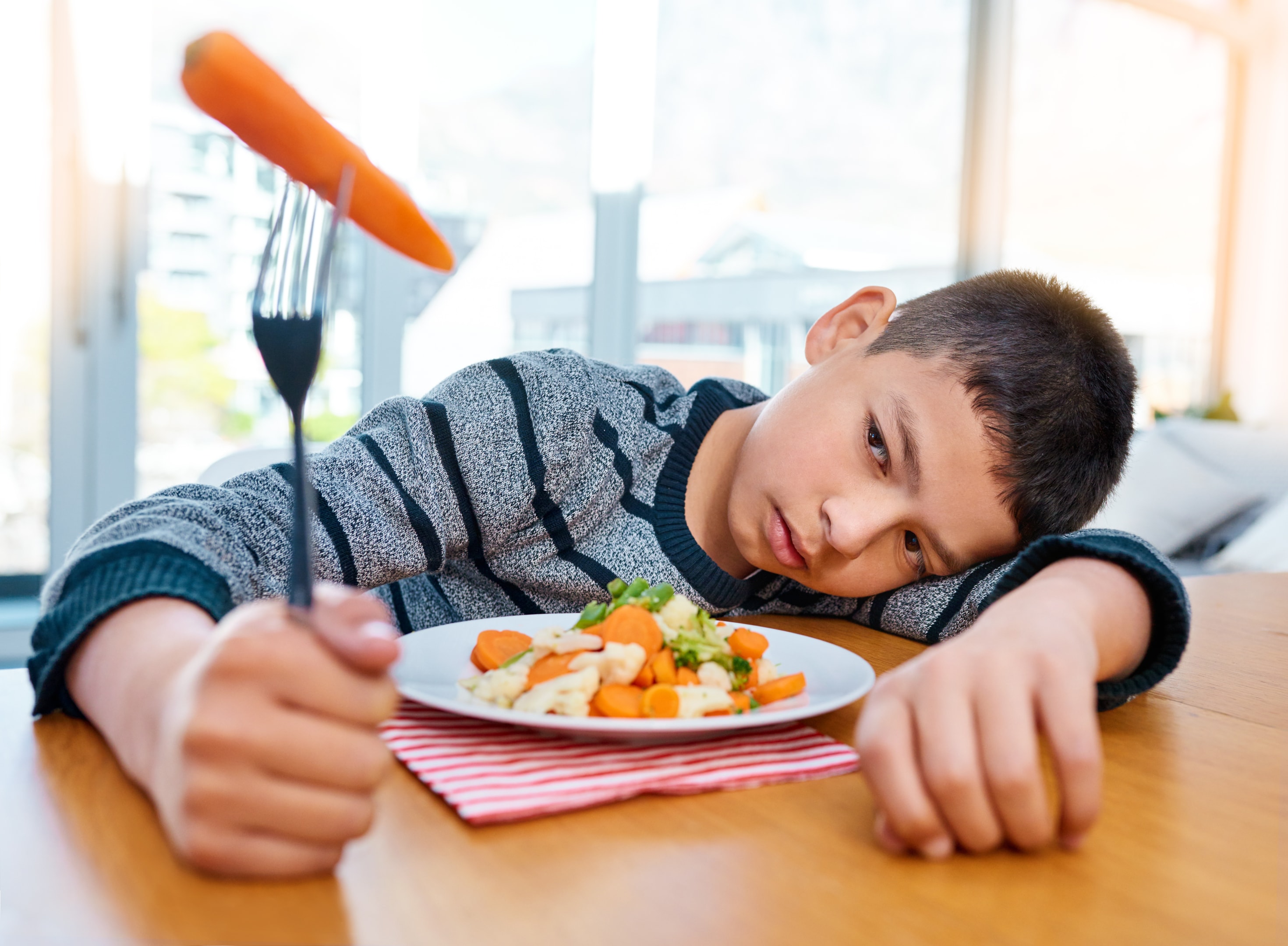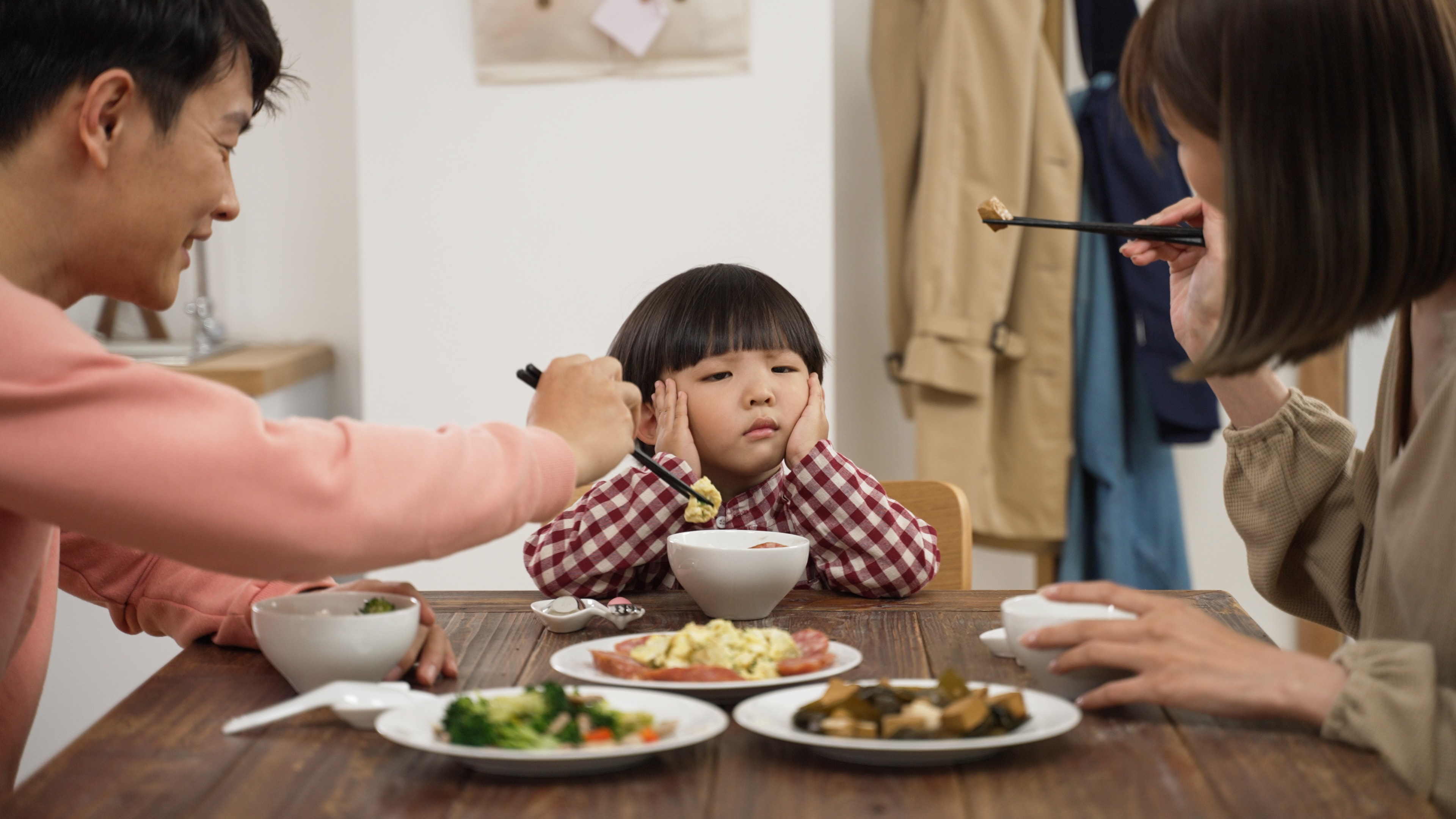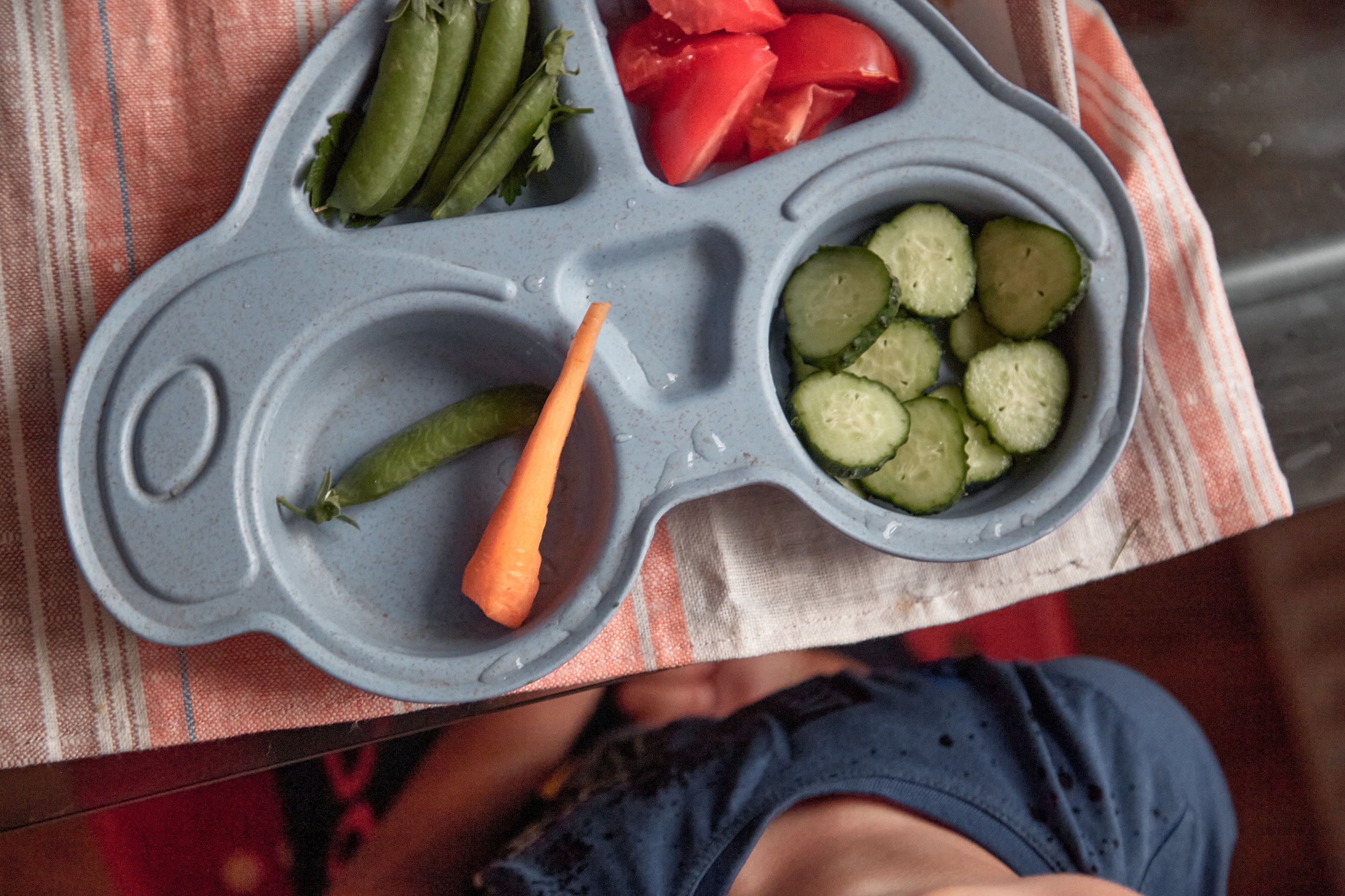Why Forcing Kids to Clean Their Plate Could Harm Them – And What to Do Instead.

Let’s have a heart-to-heart about something many of us grew up with: the “clean plate club.” You know the drill – those well-meaning reminders about children starving somewhere else, the standoffs over broccoli, the promises of dessert “if you just take three more bites.”
I get it. When our little ones push away a perfectly good meal we spent 30 minutes preparing (while simultaneously answering emails and stopping the toddler from redecorating the walls), it’s frustrating! But as it turns out, our “finish your food” instincts might need a gentle update.
When Good Intentions Lead Us Astray

Remember how our parents made us sit at the table until we finished those cold peas? While they meant well (truly!), research is showing this approach might accidentally teach our kids to ignore their body’s own wisdom.
Our little ones actually come with built-in hunger and fullness meters! When we override those natural signals with our adult agenda, we’re unintentionally teaching them something concerning: that external cues matter more than what their body is telling them.
The Mealtime Power Struggle Is Real

Raise your hand if you’ve ever heard yourself saying things like:
“Just three more bites and then you can be excused”
“No dessert unless you finish your chicken”
“You haven’t eaten enough yet”
I’m definitely guilty! But here’s the thing – when mealtime becomes a battlefield, nobody wins. Our kids start dreading the dinner table, and we end up stressed about nutrition. It’s a lose-lose situation wrapped in good intentions.
What Happens When We Push Too Hard

When little ones are regularly made to eat past their comfortable fullness level, they start learning a troubling lesson: ignore what your body is telling you. This disconnection from hunger cues can follow them into adulthood, contributing to problems like:
- Difficulty knowing when they’re actually hungry or full
- Using food to cope with emotions rather than nourishment
- Anxiety around mealtimes or certain foods
- In some cases, even setting the stage for more serious issues like disordered eating
And I’m not just making this up, folks! The science backs this up. Research from Michigan found that while force-feeding surprisingly doesn’t affect whether kids become picky eaters, it does negatively impact how they interact with their parents (Gander, 2018). Talk about relationship damage over a few bites of mac and cheese!
Even more concerning, studies show that pressure to eat is associated with lower BMIs in children and can create lasting negative attitudes toward healthier food options (Galloway et al., 2006). So our “eat your veggies or else” approach? It might actually be creating the exact opposite effect we’re hoping for!
The effects range from immediate (hello, dinner table meltdowns) to potentially lifelong. We’re talking food aversions, undereating issues, and in some cases, even eating disorders that can persist into adulthood if not addressed (Grover, 2024). That broccoli standoff suddenly doesn’t seem worth it, does it?
Yikes! Not exactly what we’re aiming for, is it?
A Gentler Approach to Raising Healthy Eaters

So what’s a well-meaning parent to do? I’ve found a few strategies that help create a more peaceful mealtime while still encouraging healthy habits:
1. Trust Those Little Tummies
Children’s appetites fluctuate wildly from day to day (and meal to meal). Some days they seem to inhale everything in sight, and other days they nibble like little birds. Both are normal! Their bodies are actually pretty smart about taking in what they need over the course of a week, even if individual meals seem concerning.
This is especially important since research shows that forced eating is most common at home (with about half of respondents in one Korean study agreeing) and at school. Those same forced eating habits were shown to negatively impact children’s views on vegetable consumption as they grow up (Kim & Lee, 2020). So while we think we’re helping by insisting on “just one more bite” of those veggies, we might actually be turning them off healthy eating for years to come!
2. Serving Sizes That Make Sense

Those adult-sized portions can be overwhelming! Try starting with smaller amounts – maybe just a tablespoon of each food for each year of age. It’s much less intimidating, and they can always ask for seconds if they’re still hungry.
3. Make Mealtimes About More Than Just Food
Some of our best family conversations happen around the dinner table! When we focus on connection instead of consumption, everyone relaxes. Plus, seeing mealtimes as positive social experiences helps children develop healthier relationships with food.
4. The “Division of Responsibility” Game-Changer

This simple approach has saved many mealtimes in our house: Parents decide the what, when, and where of feeding (choosing healthy options, setting meal/snack times, creating a pleasant eating environment). Kids decide the whether and how much (if they’ll eat and how much they’ll take).
When everyone stays in their lane, mealtime peace becomes possible!
Simple Swaps for Healthier Food Talk
Instead of: “You need to finish everything on your plate.” Try: “Is your tummy feeling full or still hungry?”
Instead of: “No dessert until you eat your vegetables.” Try: “We’re having apple crisp for dessert tonight after dinner.”
Instead of: “Just three more bites!” Try: “You can be all done when you’re full.”
The Long Game of Raising Healthy Eaters

Remember, we’re playing the long game here. Our goal isn’t just getting nutrients into them today – it’s raising adults who have a positive relationship with food and their bodies.
When we trust our children’s hunger signals and create positive mealtime experiences, we’re setting them up for a lifetime of healthier eating. And honestly? It makes dinnertime a whole lot more pleasant for everyone involved.
So tonight, maybe we can all take a deep breath and remind ourselves: this one meal isn’t make-or-break. We’re building healthy patterns meal by meal, day by day. Sometimes they’ll eat everything, sometimes barely anything – and somehow, they’ll still grow.
What’s your biggest mealtime challenge? Have you found any approaches that help create more peaceful meals in your home? I’d love to hear what works for you!
Children’s Eating Habits FAQs

Q: Why can’t I make my child finish their food?
A: Forcing children to finish their food disrupts their natural ability to self-regulate hunger and fullness. When parents control how much children eat, kids stop trusting their body’s signals and may develop emotional problems around food. Research shows that pressuring children to eat certain foods often backfires, creating negative associations and potential eating disorders later in life. Plus, forcing a child to eat teaches them that their feelings don’t matter, which can impact their mental health beyond just food issues. Instead of clean plates, we should focus on offering healthy options and respecting our child’s hunger cues for their healthy development.
Q: How can I get my child to eat without a power struggle?

A: Instead of forcing children to finish everything, focus on making mealtime positive. Serve small portions of different foods and offer seconds if they’re still hungry. Involve kids in meal planning and prep when possible – kids are more likely to eat food they’ve helped create! Have a regular schedule for meals and snacks so they come to the table hungry. Keep the atmosphere relaxed – when the whole family eats together without pressure, kids learn healthy eating habits by observation. Most importantly, parents control what foods are offered and when, while children control how much they eat. This division of responsibility eliminates the battle of wills that makes mealtimes stressful.
Q: What are the long term effects of making my child finish their food?

A: When parents consistently make their children eat past fullness it can have serious long term consequences. Children may develop eating disorders like binge eating or restrictive eating as they get older. Many children forced to clean their plates become adults who struggle to stop eating when full and potentially contribute to weight issues and obesity. Beyond the physical effects, forcing food can create anxiety around mealtimes and damage parent-child relationships. Research shows that pressured eating in childhood correlates with negative attitudes towards nutrition in adulthood and other mental health issues including poor body image and low self esteem. By respecting our child’s hunger cues today we’re protecting their relationship with food for life.
Q: How can I help my picky eater?

A: Helping picky eaters requires patience not pressure. Offer new foods repeatedly (it may take 10-15 exposures before they accept) without forcing them to eat. Serve small amounts of fruits and vegetables alongside foods they already like. Many parents find that involving kids in growing, shopping for and preparing meals makes them more willing to try new foods. Consider how you present food – sometimes it’s about taste, sometimes it’s about presentation. Model healthy eating yourself as kids learn by watching. Remember most children go through picky phases as a normal developmental stage. Focus on nutrition long term not what’s on their plate at any one meal.
Q: Can I let my child leave the table if they say they’re full?

A: Yes! When your child says they’re full, letting them stop eating shows you respect their body’s signals. Forcing children to finish their food teaches them to ignore fullness cues which may lead to overeating problems later in life. But you can establish family mealtime rules that balance respecting hunger with teaching social skills. For example ask children to sit with the family for a reasonable amount of time even after they’ve finished eating. This way meals remain social experiences without forcing food consumption. If you’re worried they didn’t eat enough remember children often regulate their intake across days not individual meals – they may naturally eat more at the next meal or snack.
Q: What portion sizes should I be serving my child?

A: Many parents worry about portion sizes, but children’s needs vary dramatically based on age, activity level and growth patterns. As a starting point serve approximately one tablespoon of each food group per year of age for toddlers and young children. For example, a 3-year-old might get 3 tablespoons of pasta, 3 tablespoons of vegetables and 3 tablespoons of fruit. Let children ask for seconds if they’re still hungry rather than overloading their plate initially. Remember, toddler’s growth slows down after age one, so they may eat less than you expect. Trust that your child will eat what their body needs even if it seems like very little some days and a lot on others.
Q: How can I teach my child to trust their hunger and fullness cues?

A: Teaching children to honour their body’s signals starts with respecting when they say they’re hungry or full. Avoid comments like “you’ve had enough” or “you need to finish all the food on your plate”. Instead, ask, “Is your tummy feeling full?” or “Are you still hungry?” Teach children to recognise physical hunger (empty feeling, rumbling stomach) versus the emotional desire to eat. Don’t use food as a reward or comfort, which can disconnect eating from actual hunger. Maintain consistent meal and snack times to help regulate hunger patterns but be flexible when your child’s appetite fluctuates. The goal is to raise children who eat when hungry and stop when satisfied – something most people lose through childhood conditioning.
Q: How can I make mealtimes more enjoyable and less stressful?

A: Transform mealtimes by focusing on connection not consumption. Keep meals relatively short (15-30 minutes) so children don’t get restless. Create a calm environment by turning off screens and reducing distractions. Involve the whole family in conversation – ask about the best part of everyone’s day or play simple table games. Offer a variety of foods including at least one item you know your child will eat. Don’t make special meals for picky eaters but include some familiar foods. Don’t discuss your child’s eating habits at the table; save those conversations for private. Remember your child’s nutrition matters over weeks not individual meals. When parents relax about food children sense it and mealtimes become a pleasant family tradition not a battleground.
Q: Is it normal for toddlers to eat very little at some meals?

A: Yes! Toddlers’ appetites fluctuate wildly, often confusing parents who worry about nutrition. One day, they might eat everything in sight; the next, they seem to survive on air and a single bite of bread. This is completely normal developmental behaviour. Children eat when hungry and stop when full and their caloric needs vary based on growth spurts, activity level and even how well they slept. Rather than focusing on individual meals, consider your child’s eating patterns over the course of a week. If your toddler is growing, has the energy to play and is meeting developmental milestones, their erratic eating habits are likely just fine. Trust that most children, even “picky” ones, naturally seek the nutrition their bodies need.
Q: How do my own eating habits influence my child’s relationship with food?

A: Your eating habits shape your child’s relationship with food more than what you say. Children observe how parents interact with food – whether you skip meals, make negative comments about your body, overeat or eat mindfully. When family eats together regularly children learn healthy patterns by example. Parents who diet frequently or express guilt about certain foods may pass food anxiety to their children. Parents who eat a variety of foods without labelling them as “good” or “bad” tend to raise more adventurous, relaxed eaters. Creating a positive food environment goes beyond what’s on the plate – it’s about your attitudes, comments and behaviour around eating. Your own healthy relationship with food might be your child’s most important nutrition education.
A BIG thank you to our intern, Jefferson, for all the research that went into writing this article!
References:
Gander, K. (2018, July 30). Why parents shouldn’t force Picky Kids to eat
Grover, S. (2024, April 15). Harmful effects of force-feeding babies & kids.



